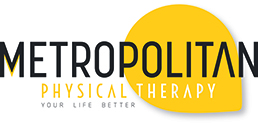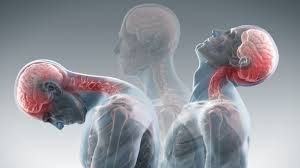“To be able to successfully treating whiplash injuries, you need to be a good manual therapist, and be a good vestibular therapist.”
Adriaan Louw, International Pain and Spine Institute
Historically, the term “whiplash” was coined by physician Harold Crowe in 1928. He used the term to describe the whip-like motion the cervical spine is subjected to during auto accidents. By 1963, Dr. Crowe regretted using the term because it was never meant to describe a syndrome or a disease, and he felt the term was misunderstood by physicians, patients, and attorneys. Internationally, it is now referred to as Whiplash Associated Disorders as a way to correct for the poor use of the initial label, and create a more accurate understanding of the term and the specific injuries that occur in high velocity traumatic collisions.
One of the most common misconceptions about neck injuries after car accidents is that their pain is only from a “muscle strain”.
Muscle strains should go away fairly quickly after an accident, and will usually spontaneously resolve after about two weeks with no to minimal care.
The reality is that many different structures can be involved or strained after an accident. This includes:
- Ligaments
- Muscles
- Cervical discs
- Facet Joints (sometimes at multiple levels)
- Peripheral nervous system (nerve roots in the neck and upper extremity)
- Central nervous system (brain and spinal cord)
- Vestibular System (usually benign positional vertigo)
- Bones
As a result, you can have a bunch of different injuries at this same time.
- Shoulder strains and tears (especially from the seat belt or your hands on the steering wheel)
- Coordination problems and poor balance
- Low back pain
- Neck pain
- Pelvic pain (especially from your right foot on the brake)
- Ankle and knee injuries
- Concussions/Diffuse axonal injuries
- Headaches
- Difficulty sleeping
- Difficulty reading
- Decreased ability to sit for long periods of time
- Inability to turn your neck or head
- TMJ pain
- Hand and finger numbness and pain
- Decrease ability to lift heavy objects
- Fractures and bone bruises
Proper assessment is key to your recovery, because it’s difficult to win the game if you don’t know what the exact problem is and how to control your pain and get you back to living your life. Starting to manage your injury early with good care and good information and can reduce the risk of long term symptoms. In addition, proper documentation of your injuries can help you with any legal avenues you may consider.
If you choose Metropolitan Physical Therapy, you will get the most comprehensive care for auto accidents in the area with a proven track record of positive results and good outcomes. We can help you get the care you need, and discuss all the options regarding how to get your physical therapy care paid for by the most appropriate payer.


